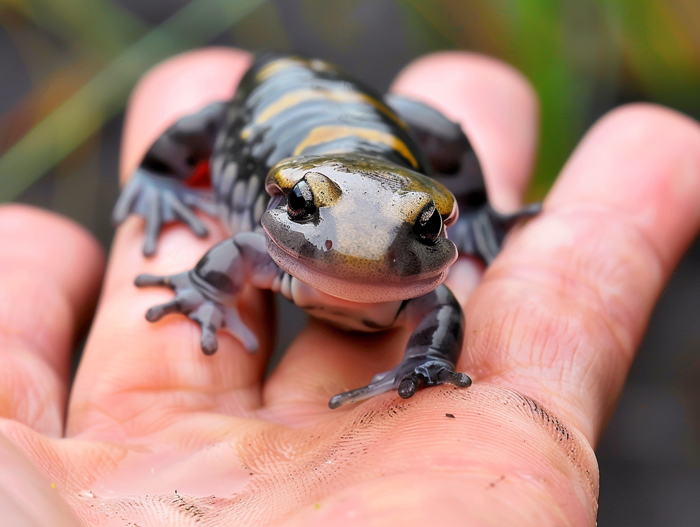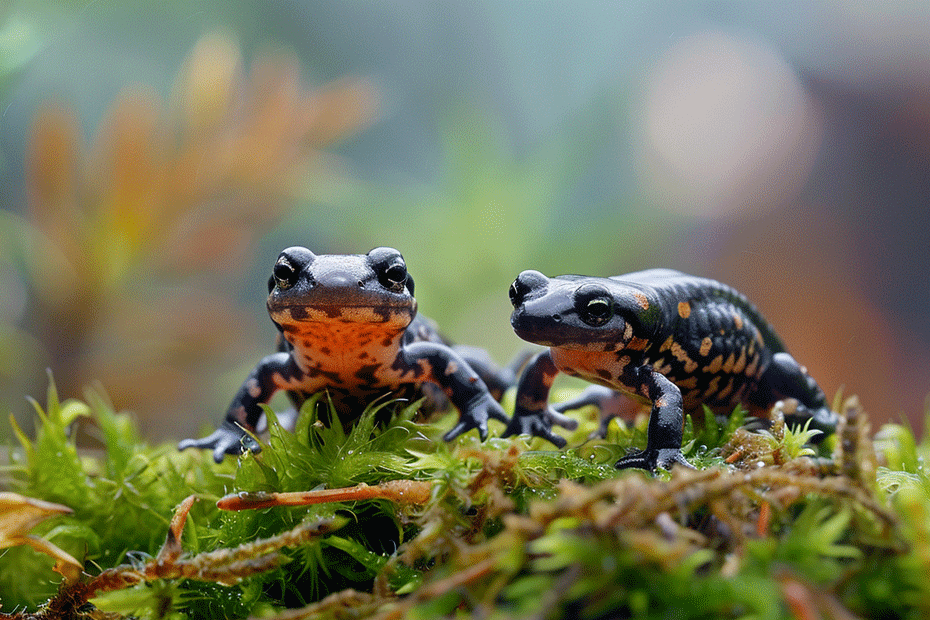Are you curious about what baby salamanders eat? Understanding their diet is crucial for their growth and development. Baby salamanders have specific dietary needs that differ from adult salamanders. Knowing what to feed them can help ensure their health and well-being. Let’s jump into the intriguing area of baby salamander nutrition.
Feeding baby salamanders the right food is essential for their survival. Their diet typically consists of small insects, worms, and other tiny invertebrates. Providing them with a balanced and nutritious diet is key to their overall health. Stay tuned to discover more about the dietary habits of these intriguing creatures.
Key Takeaways
- Baby salamanders have specific dietary needs that differ from adult salamanders, requiring a diet of small insects, worms, and tiny invertebrates.
- A balanced diet rich in protein, calcium, and vitamin D3 is crucial for the health, growth, and development of baby salamanders.
- Feeding guidelines include offering a variety of live prey, dusting prey insects with calcium supplements, and avoiding overfeeding to maintain a healthy weight.
- Proper temperature and humidity levels are vital for the metabolism and nutrient absorption of baby salamanders, impacting their appetite and digestion.
- Baby salamanders consume insects like crickets and fruit flies, worms such as earthworms and mealworms, and aquatic prey like small fish and tadpoles for essential nutrients.
- Understanding and catering to the diverse feeding habits of baby salamanders can significantly contribute to their overall health and development.
Overview of Baby Salamanders’ Diet

When it comes to baby salamanders’ diet, it’s essential to understand their specific nutritional needs for optimal growth and development. Here’s an overview to help you provide the best care for these fascinating creatures:
What Do Baby Salamanders Eat?
- Small Insects: Baby salamanders rely heavily on a diet of small insects like crickets and fruit flies to meet their protein requirements.
- Worms: Another crucial part of their diet includes worms, such as earthworms or small mealworms, which provide essential nutrients.
- Tiny Invertebrates: Incorporating tiny invertebrates like springtails or mites can offer a diverse range of nutrients vital for their well-being.
Importance of a Balanced Diet
- Ensuring a balanced and varied diet is key to baby salamanders’ health and survival.
- Adequate calcium and vitamin D3 intake is critical for healthy bone development.
- Protein-rich foods are essential for muscle growth and overall health.
Feeding Guidelines
- Offer a variety of live prey to mimic their natural feeding habits.
- Dust prey insects with a calcium supplement to prevent nutritional deficiencies.
- Avoid overfeeding to maintain a healthy weight and prevent obesity.
- Temperature and humidity levels can impact a baby salamander’s appetite and digestion.
- Ensure the enclosure provides suitable conditions for proper metabolism and nutrient absorption.
By following these guidelines, you can ensure that your baby salamanders receive the optimal nutrition they need for healthy growth and development.
Types of Food Baby Salamanders Eat

Insects
- Baby salamanders primarily feed on small insects such as crickets and fruit flies.
- These insects provide essential protein for their growth and development.
Worms
- Another crucial part of a baby salamander’s diet includes Worms like earthworms and mealworms.
- These worms offer necessary nutrients vital for their overall health.
- Baby salamanders also consume Aquatic Prey such as small fish and tadpoles.
- These prey items contribute to their calcium and vitamin D3 intake, crucial for bone development.
Feel free to incorporate a variety of live prey options in your baby salamander’s diet to ensure they receive a well-rounded nutritional intake.
Feeding Habits of Baby Salamanders

When caring for baby salamanders, understanding their feeding habits is crucial to their well-being. Here are some key points to consider:
Diet Diversity:
- Baby salamanders thrive on a diverse diet that includes insects like crickets and fruit flies for essential protein.
- Worms such as earthworms and mealworms offer necessary nutrients vital for their growth.
Aquatic Prey:
- Including aquatic prey like small fish and tadpoles in their diet aids in their calcium and vitamin D3 intake, essential for bone development.
- Incorporating a variety of live prey options ensures a well-rounded nutritional intake, promoting optimal growth and development.
Understanding and catering to these feeding habits will contribute significantly to the health and development of your baby salamanders.
Conclusion
Ensure your baby salamander’s diet is diverse, incorporating insects like crickets and fruit flies for protein, worms such as earthworms and mealworms for essential nutrients, and aquatic prey like small fish and tadpoles for bone development. Providing a variety of live prey options is key to promoting optimal growth and development in your baby salamanders.

Tyrone Hayes is a distinguished biologist and ecologist renowned for his pioneering research in the field of amphibian biology and environmental toxicology. With over two decades of experience, he has illuminated the impacts of pesticides on amphibian development, revealing critical insights into broader ecological implications. Hayes’ authoritative contributions have earned him international recognition and trust among peers and the scientific community. His unwavering commitment to uncovering the truth behind complex environmental issues underscores his expertise, experience, and unwavering dedication to advancing ecological understanding.
